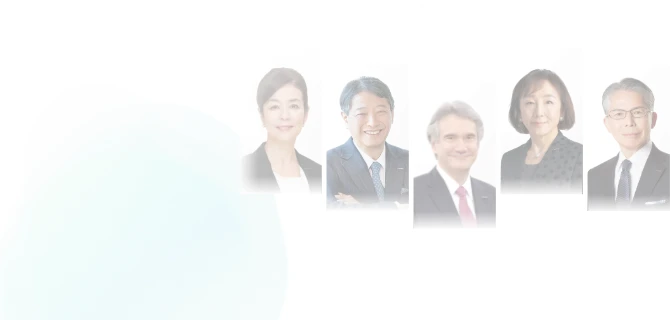
Sustainability Management
Sustainability Management


Targets and Progress
Sustainability Management
Sustainability Management
Medium-to-Long-term Sustainability-related Targets
(compared with 2019)
(SBTi, Scope 1+2)
(SBTi, Scope 3)
(compared with 2014)
(palm oil equivalent basis)
(paper weight basis)
Executive Officers 35.3%
Managers in Japan 37.6%
(to reach directly)
(to reach directly)
Major Initiatives
1. Reducing our Environmental Footprint
Every company must commit to addressing environmental issues and taking real actions, not only to protect the global environment and preserve biodiversity but to ensure sustainable social and economic development as well as sustainable business growth. Shiseido has set medium-to-long-term targets for reducing CO₂ emissions (the bulk of greenhouse gas emissions), conserving water resources, and reducing waste, which are major environmental issues, and we are working with stakeholders throughout the value chain to accomplish those targets.
In response to climate change, we obtained certification for our science-based targets in 2022 to reduce CO₂ emissions by 2030 throughout the entire value chain and have also joined RE100. This global initiative promotes a 100% switchover to renewable electricity in business operations. We will continue working to reduce CO₂ emissions, creating opportunities for innovation in this area.
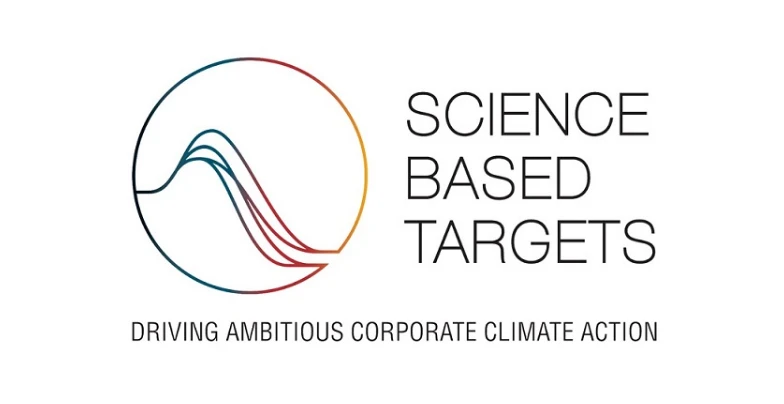
Scenario Analysis Based on TCFD Recommendations
Given the seriousness of the impact of climate change issues on business growth and social sustainability, Shiseido has been disclosing information in line with TCFD’s framework. Disclosures include the results of our qualitative and quantitative analyses of the risks and opportunities associated with the transition to a decarbonized society and changes in the natural environment due to climate change for both the 1.5/2°C and 4°C scenarios, as well as our major actions, over the short, medium, and long term.
Details of Scenario Analysis
Assuming temperature increases of 1.5/2°C and 4°C, we analyzed risks and opportunities according to the Representative Concentration Pathways (RCP) and Shared Socioeconomic Pathways (SSP), two scenarios presented by the Intergovernmental Panel on Climate Change (IPCC). Regarding transitional risks, the risk factors associated with the transition to a decarbonized society — such as policy, regulation, technology, market, and consumer awareness — were considered. Physical risks related to the acute or chronic phenomena caused by the rise in temperature — such as floods and water shortages — were also considered. Based on these considerations, the financial impacts of the 1.5/2°C and 4°C scenarios were then analyzed. The risk of increased costs due to the carbon tax as of 2030 is projected to have a potential financial impact of approximately 100 to 800 million yen, depending on the number of countries and regions where the carbon tax will be introduced.
In terms of opportunities, in the 1.5/2°C scenario, the support for brands and products that address sustainability is expected to increase as the consumers become more environmentally conscious. In the 4°C scenario, we expect sales opportunities for products that respond to rising temperatures will expand. By developing new solutions with innovation, we aim to supply sustainable products that mitigate risk and present new opportunities.
For more information on our assessment of climate-related risks and opportunities, including the assumptions for our scenario analysis, information on governance, risk management, and indicators and targets, please refer to The Report of Climate-related Financial Disclosure and our Sustainability Report.
See below for external assessments of our sustainability efforts and endorsements of our global initiatives.

Stock Information,
and External Evaluations
2. Developing Sustainable Products
Sustainable packaging plays a critical role in our efforts to reduce our environmental footprint related to climate change and marine debris. We are accelerating efforts that include designing sustainable packaging.
Shiseido has established a goal to achieve 100% sustainable packaging by 2025 based on our packaging development policy, 5Rs (Respect, Reduce, Reuse, Recycle, and Replace). In order to reduce our environmental footprint, we are working to reduce packaging weight, reduce plastic usage by expanding refillable packaging, promote recycling by designing easy-to-recycle packaging, and use and recycled materials (PCR).
In 2022, we collaborated with SEKISUI CHEMICAL CO., LTD. and Sumitomo Chemical Co., Ltd. on a joint initiative and began establishing a circular economy model for plastic cosmetics packaging in which used cosmetics plastic packaging are collected, converted to resources and materials without sorting, and recycled back into plastic cosmetics packaging. The three companies will advance this cross-sectoral alliance while also calling on related industries and companies to join in the effort, striving to create a circular economy.
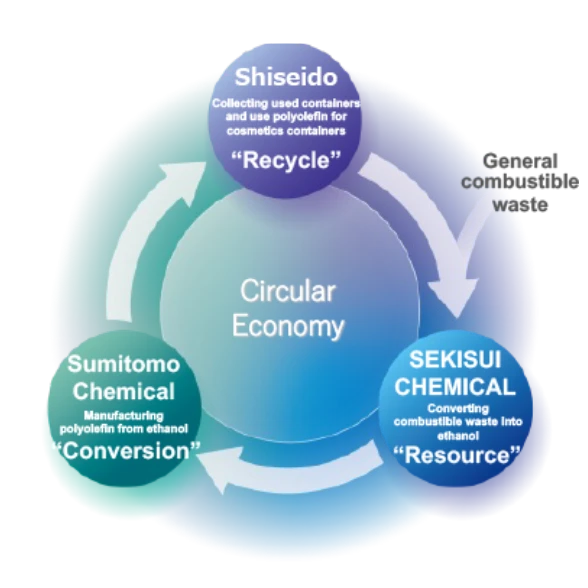
3. Sustainable and Responsible Procurement
At Shiseido, we utilize finite natural resources to operate our business. We understand that these resources are limited, and as such, we place the utmost importance on our responsibility in the sustainable and responsible procurement of raw materials at every stage of the supply chain. This includes the reduction and reuse of resources from the perspectives of environmental preservation, biodiversity in response to the circular economy. We also consider it essential to work with suppliers to address issues such as human rights.
Shiseido has disclosed medium-to-long-term targets for palm oil and paper, which are raw materials of concern from an environmental and social perspective, and we are promoting a transition to sustainable raw materials. We have presented code of conduct, policies, and guidelines for working with suppliers. Based on a 2022 revision of the Shiseido Group Procurement Policy, we will evaluate suppliers from a sustainability perspective and increase business with high-performing suppliers.
4. Advancing Gender Equality
Shiseido participates in the 30% Club Japan, working to achieve gender balance in corporate decision-making bodies. As a part of this global initiative that originated in the UK, it aim to boost female representation on company board in Japanese companies. The Japan chapter was launched in May 2019 with the goal of achieving a 30% ratio of female directors at TOPIX 100 companies by 2030, and the second term of the program began in May 2022. Masahiko Uotani, Shiseido’s Representative Director, Chairman and CEO, served as Chair and continues in this role for the second term. He is active in the TOPIX Presidents’ Committee, a community of chairpersons and presidents of 35 companies listed in the TOPIX 100 and TOPIX Mid 400. In the second term, the 30% Club Japan’s integrated approach launches fully through collaboration to develop initiatives that work for stakeholders at companies as well as the whole society. An Investor Group comprising 31 companies and a University Group comprising nine universities work with the TOPIX Presidents’ Committee to promote the initiatives in tangible ways.
Shiseido will lead the transformation of Japanese companies toward breaking away from homogeneity and promote the active participation of women and generation of innovations emerging therefrom.

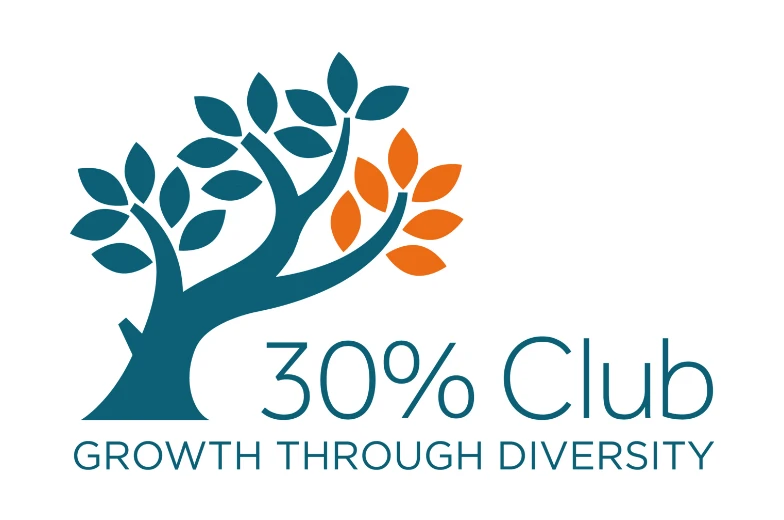
5. Empowering People through the Power of Beauty
At Shiseido, we strive to empower everyone through the power of beauty. For decades, we have been engaged in social contribution and research that promote well-being through the power of beauty—physical, mental, and social well-being. We will continue to carry out Shiseido Life Quality Beauty initiative to help people to feel confident, and free to be themselves, regardless of age, illness, or disability.
Since 2017, we have participated in LAVENDER RING, a multilateral project in Japan to support and empower people with cancer. As part of the project, Shiseido have led MAKEUP & PHOTOS WITH SMILES photo exhibit. In 2022, Shiseido expanded internationally to four countries and regions (China, Singapore, Taiwan, and Thailand), reaching a total of 107 cancer survivors, with 120 employee volunteers participating. After seeing the smiles of so many cancer survivors, we received numerous requests to continue the program from the patient groups and the medical institutions we collaborated with.
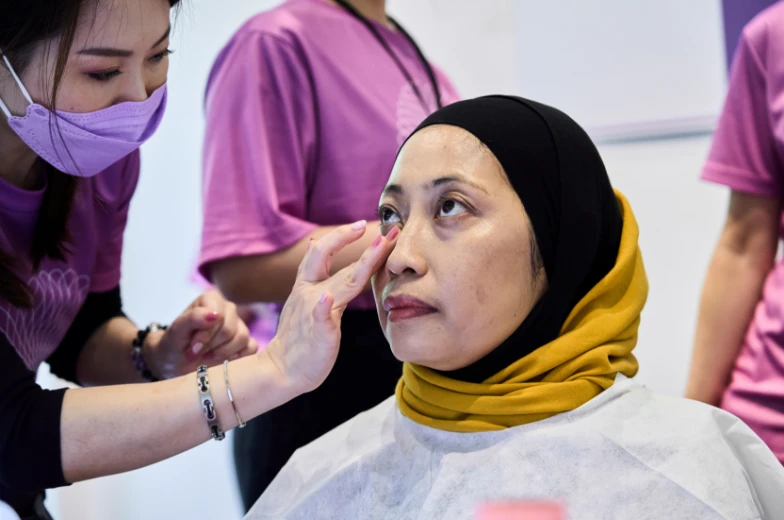
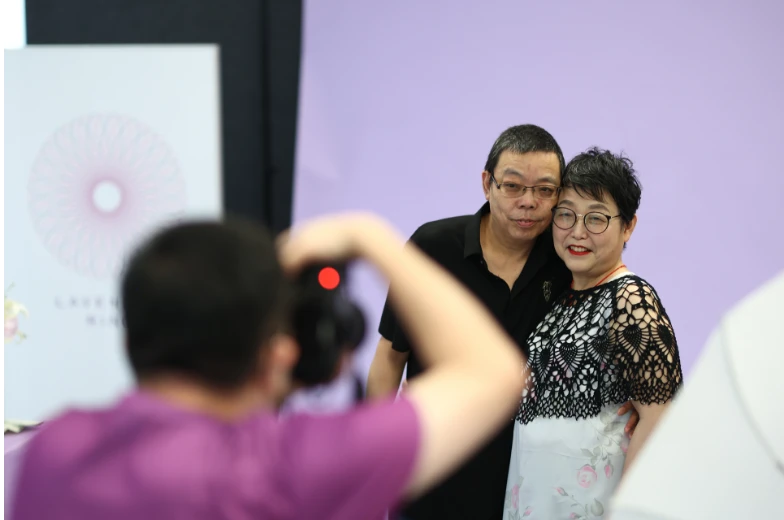
6. Respect for Human Rights
At Shiseido, respect for human rights is at the core of our DNA. Shiseido respects and supports international norms related to human rights, starting with the UN Guiding Principles on Business and Human Rights and the International Labor Organization's (ILO’s) Core Labor Standards—the former stipulating the fundamental human rights of all people and the latter stipulating basic rights at work. We are committed to eradicating human rights issues — including forced labor and child labor — as well as workplace harassment, which is an issue that has become more prevalent due to changes in social structure and the rise of more diverse values. Unless appropriate action is taken to deal with all human rights issues, it can lead to serious corporate risks. The Shiseido Code of Conduct and Ethics sets forth the actions that must be taken and shared by every individual working for the Shiseido Group. Based on these standards, which are consistent with the highest ethical principles, we promote respect for human rights through initiatives in the global supply chain, which extends to a broad range of stakeholders, multiple countries and regions, and diverse cultures.



